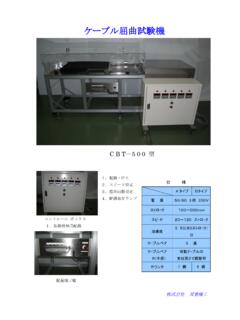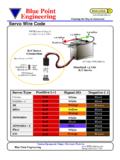Transcription of R R - Hobbico
1 R R. Thank you for purchasing a futaba 6YG. Before using your 6YG, read this manual carefully and use your R/C set safely. After reading this manual, store it in a safe place. See the glossary page 22 for a definition of the special terms used in this manual. APPLICATION, EXPORT, AND RECONSTRUCTION. 1. This product may be used for model airplane or surface use if on the correct frequency. 2. Exportation precautions (a) When this product is exported from Japan, its use is to be approved by the Radio Law of the country of destination. (b) Use of this product with other than models may be restricted by Export and Trade Control Regulations. An application for export approval must be submitted.
2 3. Modification, adjustment, and replacement of parts futaba is not responsible for unauthorized modification, adjustment, and replacement of parts of this product. The Following Statement Applies to the Receiver (for ). This device complies with part 15 of the FCC rules. Operation is subject to the following two conditions: (1) This device may not cause harmful interference, and (2) This device must accept any interference received, including interference that may cause undesired operation. No part of this manual may be reproduced in any form without prior permission. The contents of this manual are subject to change without prior notice. This manual has been carefully written.
3 Please write to futaba if you feel that any corrections or clarifications should be made. futaba is not responsible for the misuse of this product. CONTENTS. -2- SAFETY Meaning of Special Markings ..4. Precautions During Flight ..4. NiCd Battery Charging Precautions ..6. Storage and Disposal Precautions ..7. Other Precautions ..8. BEFORE USE ..9. Set Contents ..9. Name and Handling of Each Transmitter Operation and Movement of Each Servo ..14. INSTALLATION AND ADJUSTMENT ..15. Connections ..15. Adjustments ..17. USING OTHER FUNCTIONS ..18. Aileron/Elevator Dual Rate (D/R) Function ..18. Non-slip Adjustable Lever Head ..18. Stick Lever Spring Tension Adjustment.
4 19. Trainer Function ..19. Ratings ..20. Troubleshooting ..21. Glossary ..22. Repair Service ..23. -3- S AFETY INFORMATION. To ensure safe use, observe the following precautions. Meaning of Special Markings Pay special attention to safety at the parts of this manual that are indicated by the following marks. Mark Meaning Procedures which may lead to a dangerous condition and cause death or serious injury to the user if not carried out properly. Procedures which may lead to a dangerous condition or cause death or serious injury to the user if not carried out properly, or procedures where the probability of superficial injury or physical damage is high. Procedures where the possibility of serious injury to the user is small, but there is a danger of injury, or physical damage, if not carried out properly.
5 Symbol: Prohibited Mandatory Precautions During Flight Do not fly or turn "On" simultaneously on the same frequency. Interference will cause a crash. Use of the same frequency will cause interference even if the modulation method (AM, FM, PCM) is different. Do not fly on rainy or windy days, or at night. Water will penetrate into the transmitter (Tx) and cause faulty operation, or loss of control, and cause a crash. -4- Do not fly in the following places: -Near other R/C flying fields (within about [3km]. -Near people on the ground, or objects in the air -Near homes, schools, hospitals, or other places where there are a lot of people -Near high tension lines, high structures, or communication facilities Radiowave interference and obstructions may cause a crash.)
6 A crash caused by trouble in the R/C set, or the model itself, may cause death or property damage. Do not fly when you are tired, sick, or intoxicated. Fatigue, illness, or intoxication will cause a loss of concentration or normal judgment and result in operation errors and a crash. Extend the antenna to its full length. If the antenna is shortened, the effective range of the radio signal will be shorter. Always test the R/C set before use. Any abnormality in the R/C set, or model, may cause a crash. Before starting the engine, check that the direction of operation of each servo matches the operation of its control stick. If a servo does not move in the proper direction, or operation is abnormal, do not fly the plane.
7 Check that the transmitter (Tx) antenna is not loose. If the transmitter antenna comes off during use, control will be lost and the model will crash. When placing the transmitter (Tx) on the ground during flight preparations, be sure that the wind cannot knock it over. If it is knocked over, the throttle stick may be pushed to full throttle, the engine will speed up and create a very dangerous situation. Do not touch the engine, motor, or FET amp (speed control) during and immediately after use. They are hot and will cause a burn. -5- Turning on the power switch: Set the transmitter (Tx) throttle stick to idle. 1. Turn "On" the transmitter (Tx) power switch, 2.
8 Then turn "On" the receiver (Rx) power switch. Turning off the power switch: Stop the engine, 1. Turn "Off" the receiver (Rx) power switch, 2. Then turn "Off" the transmitter (Tx) power switch. If the Tx power switch is turned off first, the engine may go to full throttle unexpectedly and cause an injury. Idle: The stick direction in which the engine or motor runs at the slowest speed. (usually the down position). When adjusting the R/C set, always stop the engine. If the engine suddenly goes to full throttle, it may cause an injury. Nicd Battery Charging Precautions Always charge the nicd batteries before each flight. If the battery goes dead during flight, the plane may crash or fly away.
9 Charge the R/C nicd battery with the standard charger, or fast field charger. (sold separately). Overcharging may cause burns, fire, injury, blindness, etc. due to overheating, breakage, electrolyte leakage, etc. -6- Do not short the nicd battery connector terminals. Shorting the terminals will cause sparking and overheating and result in burns or fire. Do not drop or apply strong shock to nicd battery. The battery may short out and cause overheating or breakage and electrolyte leakage and result in burns or damage from chemical contents. Storage and Disposal Precautions Do not leave the R/C set, battery, model airplane, etc. within the reach of small children.
10 Touching and operating the R/C set, or licking the battery, may cause injury or damage due to chemical content. Do not throw the nicd battery into a fire or heat the nicd battery. Also, do not disassemble or rebuild the nicd battery. Breakage, overheating, and electrolyte leakage may cause injury, burns, or blindness. Nicd Battery Electrolyte The electrolyte in a nicd battery is a strong alkali and can cause blindness if it gets in the eyes. If you get the electrolyte in your eyes, immediately wash your eyes with water and see a doctor. If you get the electrolyte on your skin or clothes, it may cause a burn. Immediately wash it off with water. -7- Do not store the R/C set in the following places: -Where it is very hot (75 F [40C] or more) or very cold (18 F [-10C] or less).
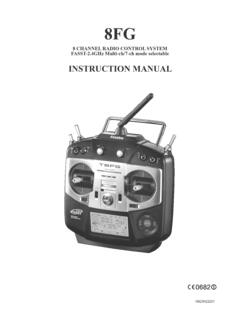
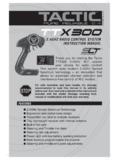
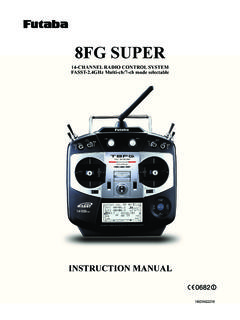
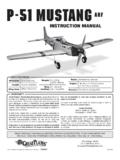
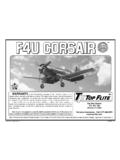
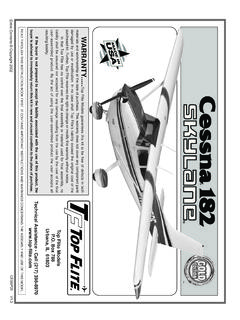
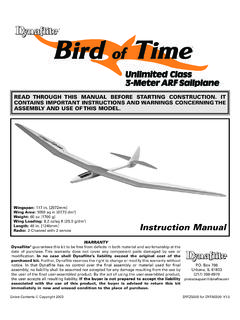
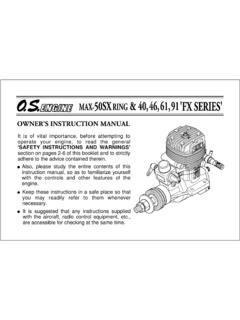
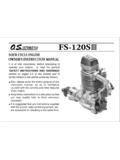
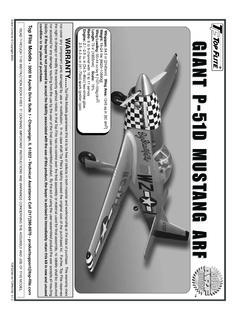
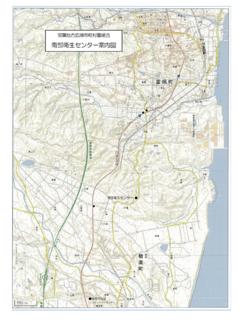
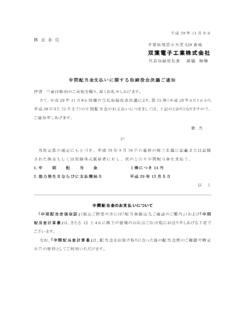
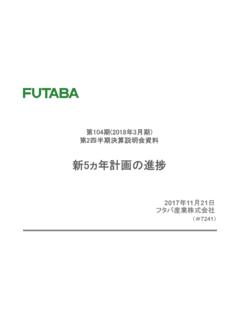
![16 17 [更新済み] - rc.futaba.co.jp](/cache/preview/8/2/3/b/c/f/c/9/thumb-823bcfc918a16dc7b35fba2fbc474782.jpg)
